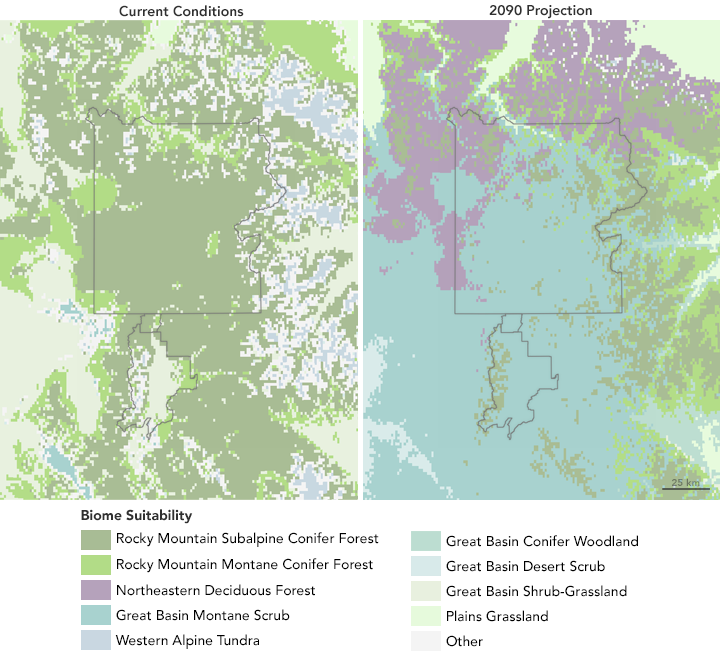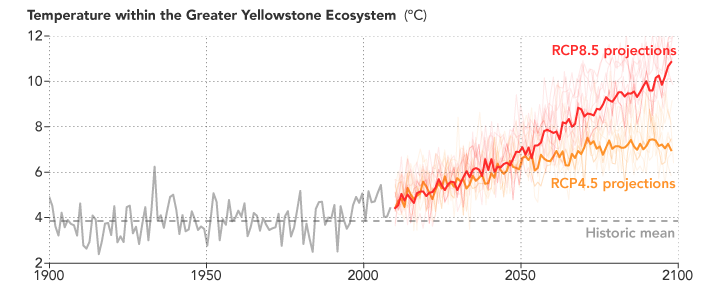


Ecologists know that the trees that add color, beauty, and shade to America’s national parks are at risk from climate change. Unlike animals, trees cannot pull up their roots and quickly migrate to another area. But figuring out which trees are the most vulnerable is complicated. The types of trees and forests vary from park to park, and even within some parks. Projected shifts in rainfall and temperature patterns in the future are just as variable and uneven. Some species will thrive as climate changes, but many are expected to suffer. And the question is: what can national park managers do about it?
To figure out what changes the parks can expect, scientists from Montana State University, the Woods Hole Research Center, the National Park Service, and NASA established the Landscape Climate Change Vulnerability Project (LCCVP). They want to use scientific observations and computer models to help the parks adapt to climate change. The data and models could give park managers context and insight on when and where to let nature manage the park and when human intervention could help. For instance, which species and forest stands should managers focus on? Where would it make sense to plant new stands of trees, and which species would benefit?
Climate change can make an area less suitable for some trees and plants, and more suitable for others. Within several decades, the primary vegetation found around places like Yellowstone National Park is predicted to undergo substantial transformation. The map above, based on data from the LCCVP, shows how habitat in Yellowstone looks now, and how it is projected to look by 2090.

In Yellowstone, spruce and fir forests have adapted to and thrived in a climate where summertime temperatures rarely surpass 90 degrees Fahrenheit (32° Celsius). But 30 years from now, if climate models are right, the park will see an average of two weeks every summer with temperatures surpassing 90°F.
“If temperatures keep increasing, things will shift in ways that parks haven’t seen before,” said Patrick Jantz, an ecologist at the Woods Hole Research Center. “So there’s been a shift in the parks from managing for historical conditions—to bring things back to a pristine ecological state—to a whole new way of thinking: managing for species turnover.”
Read more about climate change and protected landscapes in our new feature story Natural Beauty at Risk: Preparing for Climate Change in National Parks.
NASA Earth Observatory images by Joshua Stevens, using data from the Landscape Climate Change Vulnerability Project. Caption by Kathryn Hansen.